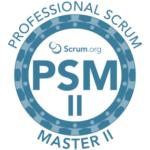Are organizations compromising on security to boost productivity, or is there a way to achieve both? In today’s digital landscape, managing user identities and access privileges is crucial for organizations to enhance security and productivity.
Identity and Access Management (IAM) services provide a comprehensive solution to streamline access control, ensuring that the right individuals have access to the right resources at the right time.
By implementing IAM, organizations can significantly reduce the risk of data breaches and cyber threats while improving operational efficiency
What is Identity and Access Management Service?
At its core, Identity and Access Management Service is designed to streamline the process of managing user identities and controlling access to organizational resources. This involves a combination of technologies, policies, and procedures that work together to ensure that the right individuals have the appropriate access to resources within an organization.
Definition and Purpose
Identity and Access Management (IAM) refers to a framework of policies, procedures, and technologies designed to manage digital identities and regulate user access to resources within an organization.
The primary purpose of IAM is to ensure that users have the necessary access to perform their tasks while preventing unauthorized access to sensitive information. Effective IAM solutions enable organizations to secure their digital assets, improve compliance, and reduce the risk of data breaches.
Key Components of Identity Management
The key components of identity management include:
- User Provisioning: The process of creating, managing, and deactivating user accounts and access rights.
- Authentication: Verifying the identity of users through various methods, such as passwords, biometrics, or multi-factor authentication.
- Authorization: Controlling what resources a user can access based on their identity and role within the organization.
- Auditing: Monitoring and logging user activity to detect and respond to potential security incidents.
By understanding these components, organizations can implement effective IAM solutions that enhance their overall security posture and improve operational efficiency.
Why is Identity and Access Management Important?
As cyber threats continue to evolve, the importance of Identity and Access Management cannot be overstated. Organizations face an ever-growing array of cyber threats, making it crucial to implement robust security measures to protect sensitive information.
Enhancing Security
One of the primary reasons IAM is crucial is its role in enhancing security. By implementing user authentication solutions and multi-factor authentication services, organizations can significantly reduce the risk of data breaches and cyber-attacks. These measures ensure that only authorized personnel have access to sensitive information, thereby protecting against unauthorized access.
The use of advanced authentication methods, such as biometrics and behavioral authentication, further strengthens an organization’s security posture. By verifying the identity of users through multiple factors, IAM solutions make it increasingly difficult for attackers to gain unauthorized access.
Improving Compliance
IAM also plays a vital role in improving compliance with regulatory requirements. Regulations such as GDPR, HIPAA, and PCI-DSS mandate strict controls over who has access to sensitive data. By implementing IAM solutions, organizations can ensure that they are meeting these regulatory requirements, thereby avoiding costly fines and reputational damage.
Effective IAM solutions enable organizations to maintain detailed records of user access and activities, facilitating compliance audits and demonstrating adherence to regulatory standards. This not only helps in avoiding legal repercussions but also enhances the organization’s reputation by demonstrating a commitment to data protection and privacy.
Key Benefits of Identity and Access Management Services
With Identity and Access Management services, organizations can simplify user management, boost productivity, and reduce costs. Identity and Access Management (IAM) solutions offer a range of benefits that enhance an organization’s overall security and operational efficiency.
Simplified User Management
IAM services provide a Single sign-on solution that allows users to access multiple applications with a single set of credentials. This simplifies user management by reducing the complexity associated with managing multiple usernames and passwords. Additionally, IAM solutions enable organizations to implement Role-based access control, ensuring that users have access to only the resources necessary for their roles.
The simplification of user management through IAM services also includes streamlined user provisioning and de-provisioning processes. This means that when an employee joins or leaves an organization, their access to various systems and applications can be efficiently managed, reducing the risk of unauthorized access.
Increased Productivity
By implementing IAM services, organizations can significantly increase productivity. With a Single sign-on solution, users no longer need to remember multiple usernames and passwords or spend time resetting forgotten passwords. This not only saves time but also reduces the frustration associated with password management, allowing users to focus on their core tasks.
- Reduced time spent on password resets
- Improved user experience with seamless access to applications
- Enhanced security through reduced password fatigue
Cost Efficiency
IAM solutions help organizations achieve cost efficiency by reducing the costs associated with manual user management, password resets, and compliance-related activities. Automated user provisioning and de-provisioning reduce the administrative burden, while Role-based access control ensures that users have appropriate access, reducing the risk of security breaches that can be costly to remediate.
Some key cost-saving aspects of IAM include:
- Reduced IT support costs due to fewer password reset requests
- Lower costs associated with managing and maintaining multiple identity systems
- Minimized risk of costly security breaches through improved access controls
In conclusion, Identity and Access Management services offer numerous benefits, including simplified user management, increased productivity, and cost efficiency. By adopting IAM solutions, organizations can enhance their security posture, improve operational efficiency, and reduce costs.
Understanding Identity Governance
As organizations grow, understanding identity governance becomes essential for maintaining secure and compliant access to resources. Identity governance is a critical aspect of Identity and Access Management (IAM), involving the definition and enforcement of policies, procedures, and standards for managing digital identities.
Roles and Responsibilities
A key component of identity governance is defining roles and responsibilities within an organization. This involves identifying who has access to what resources and ensuring that access is granted according to the principle of least privilege.
- Clearly define roles and responsibilities to avoid confusion and overlapping access.
- Implement role-based access control (RBAC) to streamline user management.
- Regularly review and update roles to reflect changes in personnel and organizational structure.
Policy Enforcement
Policy enforcement is another crucial aspect of identity governance. It involves implementing and enforcing policies that govern how digital identities are managed and how access is granted and revoked.
- Develop clear policies that outline access rights and restrictions.
- Use identity governance tools to automate policy enforcement and monitoring.
- Conduct regular audits to ensure compliance with established policies and regulatory requirements.
By understanding and implementing effective identity governance practices, organizations can enhance their overall security posture, improve compliance, and reduce the risk of data breaches. Effective identity governance is not just about technology; it’s also about processes and people.
Types of Identity and Access Management Solutions
The landscape of Identity and Access Management (IAM) solutions is diverse, encompassing cloud-based, on-premises, and hybrid approaches. This variety allows organizations to choose the IAM solution that best fits their specific needs, infrastructure, and security requirements.
Cloud-Based Solutions
Cloud-based IAM solutions offer numerous benefits, including scalability, flexibility, and reduced infrastructure costs. These solutions are particularly appealing to organizations with a significant cloud presence, as they can be easily integrated with other cloud services.
Key advantages of cloud-based IAM solutions include:
- Lower upfront costs
- Automatic software updates
- Scalability to meet growing demands
On-Premises Solutions
On-premises IAM solutions, on the other hand, provide organizations with greater control over their security and compliance. These solutions are often preferred by organizations with strict security requirements or those operating in highly regulated industries.
Benefits of on-premises IAM solutions include:
- Enhanced security control
- Better compliance management
- Customization to meet specific needs
Hybrid Solutions
Hybrid IAM solutions combine the benefits of both cloud-based and on-premises solutions, offering a flexible and scalable IAM framework. These solutions allow organizations to leverage the strengths of both approaches, creating a tailored IAM strategy that meets their unique requirements.
Advantages of hybrid IAM solutions include:
| Feature | Cloud-Based | On-Premises | Hybrid |
|---|
| Scalability | High | Limited | High |
| Security Control | Limited | High | High |
| Cost | Lower Upfront | Higher Upfront | Flexible |
In conclusion, the choice of IAM solution depends on an organization’s specific needs, infrastructure, and security requirements. By understanding the different types of IAM solutions available, organizations can make informed decisions and implement an effective IAM strategy.
Best Practices for Implementing IAM Services
Implementing Identity and Access Management (IAM) services effectively requires a strategic approach that encompasses several best practices. By adopting these practices, organizations can ensure that their IAM solutions are not only secure but also compliant with regulatory requirements and aligned with their operational needs.

Conducting a Risk Assessment
A critical first step in implementing IAM services is conducting a comprehensive risk assessment. This involves identifying potential vulnerabilities in the organization’s current identity and access management processes. By understanding these risks, organizations can develop targeted strategies to mitigate them, ensuring the integrity of their IAM system. User authentication solutions play a crucial role in this process, as they help verify the identities of users and prevent unauthorized access.
Crafting Clear Policies
Crafting clear and enforceable policies is another essential best practice for IAM implementation. These policies should outline the rules and guidelines for user access, password management, and identity governance. Clear policies help ensure that all stakeholders understand their roles and responsibilities within the IAM framework. Multi-factor authentication services are a key component of these policies, providing an additional layer of security to protect against unauthorized access.
Continuous Monitoring
Continuous monitoring of IAM systems is vital to detect and respond to security incidents in real-time. This involves regularly reviewing user activity, system logs, and access patterns to identify potential security threats. By continuously monitoring their IAM systems, organizations can quickly identify and mitigate risks, ensuring the ongoing security and compliance of their IAM solutions.
In conclusion, implementing IAM services requires careful planning, execution, and ongoing monitoring. By following best practices such as conducting a risk assessment, crafting clear policies, and continuous monitoring, organizations can ensure that their IAM solutions are effective, secure, and compliant with regulatory requirements.
Common Challenges in IAM
Despite its benefits, IAM adoption is not without its challenges. Organizations often face significant hurdles when implementing Identity and Access Management solutions, which can impact the effectiveness of their security and access control measures.
User Resistance
One of the primary challenges is user resistance. Employees may be hesitant to adopt new systems, especially if they perceive them as cumbersome or if they disrupt familiar workflows. Effective change management and comprehensive training programs are crucial in mitigating this resistance. As Microsoft emphasizes, “user adoption is key to the success of any IAM solution.”
A successful strategy involves communicating the benefits of IAM clearly, such as enhanced security through single sign-on solutions and streamlined access to resources via role-based access control. By educating users on how IAM simplifies their access and enhances security, organizations can increase user buy-in.
Integration Issues
Another significant challenge is integration issues. IAM solutions must often be integrated with existing infrastructure and systems, which can be complex and time-consuming. Ensuring compatibility and seamless integration is crucial for the success of IAM deployments. As noted by
“The complexity of integrating IAM with legacy systems can be a significant barrier to adoption.”
To address this, organizations should select IAM solutions that are known for their interoperability and compatibility with a wide range of systems. Conducting thorough compatibility assessments and planning integration carefully can help mitigate these issues.
By understanding and addressing these challenges, organizations can more effectively implement IAM solutions, enhancing their security posture and improving operational efficiency.
Technologies Driving IAM Services
IAM services are being transformed by innovative technologies that bolster access control and identity governance. These advancements are crucial in enhancing the security, efficiency, and user experience of identity and access management systems.
Biometrics
Biometric technologies, such as facial recognition, fingerprint scanning, and voice recognition, are revolutionizing the way identities are verified. Biometrics provide a more secure and convenient method of authentication, reducing reliance on passwords and PINs, which can be compromised. For instance, a leading financial institution implemented facial recognition technology to secure user logins, significantly reducing identity theft incidents.
Some of the key benefits of biometrics include:
- Enhanced security through unique identifiers
- Improved user experience with convenient authentication methods
- Reduced risk of identity theft
Multi-Factor Authentication
Multi-factor authentication (MFA) adds an additional layer of security to the authentication process, making it more difficult for unauthorized users to gain access. MFA combines two or more verification methods, such as passwords, biometrics, or one-time passwords sent via SMS. This approach significantly reduces the risk of security breaches.
The implementation of MFA can be seen in various sectors:
- Financial services, where security is paramount
- Healthcare, to protect sensitive patient data
- E-commerce, to secure online transactions
Artificial Intelligence
Artificial intelligence (AI) and machine learning (ML) are enabling IAM solutions to detect and respond to security threats in real-time. AI-powered systems can analyze vast amounts of data to identify patterns and anomalies, indicating potential security risks. AI-driven IAM solutions enhance threat detection and incident response, providing a proactive approach to security.
“AI and ML are transforming IAM by providing predictive analytics and real-time threat detection, thereby enhancing the overall security posture of organizations.”
By leveraging these technologies, organizations can significantly improve their identity governance and access control services, ensuring a more secure and efficient management of identities and access.
The Future of Identity and Access Management
The future of Identity and Access Management is marked by emerging trends and evolving regulations that are set to redefine the security landscape. As organizations continue to embrace digital transformation, the role of IAM solutions in securing digital identities and access to resources becomes increasingly vital.
Emerging Trends
Emerging trends in IAM include the adoption of decentralized identity models, passwordless authentication, and the integration of artificial intelligence (AI) to enhance security and user experience. Decentralized identity allows users to control their identity data, reducing reliance on centralized authorities. Passwordless authentication methods, such as biometrics and behavioral authentication, are gaining traction as they offer enhanced security and convenience.
- Decentralized Identity Models
- Passwordless Authentication
- Artificial Intelligence (AI) Integration
According to a recent report, “The adoption of passwordless authentication is expected to significantly reduce identity-related breaches.”
“Passwordless authentication methods are set to revolutionize the way organizations approach identity verification,” said a leading cybersecurity expert.
Evolving Regulations
Regulations such as the General Data Protection Regulation (GDPR) and the California Consumer Privacy Act (CCPA) are shaping the IAM landscape by enforcing stricter data protection and privacy standards. Organizations must comply with these regulations to avoid significant fines and reputational damage.

The impact of these regulations on IAM practices cannot be overstated. Organizations are required to implement robust identity governance and access management practices to ensure compliance.
By understanding the emerging trends and evolving regulations, organizations can better prepare for the future of Identity and Access Management. This involves adopting innovative IAM solutions and staying abreast of regulatory changes.
Choosing the Right IAM Provider
The right Identity and Access Management provider can significantly impact an organization’s ability to manage user identities and access effectively. With the increasing complexity of IT environments, selecting a provider that offers robust user authentication solutions and a seamless single sign-on solution is crucial.
When evaluating potential IAM providers, organizations should consider several key factors to ensure they choose a solution that meets their specific needs.
Key Features to Consider
Organizations should look for IAM solutions that offer advanced features such as:
- Scalability to accommodate growing user bases and evolving security requirements
- Robust security measures, including multi-factor authentication and encryption
- Ease of use, with intuitive interfaces for both administrators and end-users
- Integration capabilities with existing systems and applications
A comprehensive IAM solution should also provide detailed reporting and analytics to help organizations monitor and manage access effectively.
| Feature | Description | Importance Level |
|---|
| Scalability | The ability of the IAM solution to grow with the organization | High |
| Security Measures | Features such as multi-factor authentication and encryption | High |
| Ease of Use | Intuitive interfaces for administrators and end-users | Medium |
| Integration Capabilities | Ability to integrate with existing systems and applications | High |
Evaluating Vendor Reputation
Beyond the features of the IAM solution itself, organizations must also consider the reputation and reliability of the vendor. This includes assessing the vendor’s:
- Experience and expertise in the IAM market
- Customer support and service level agreements (SLAs)
- Track record of delivering successful implementations and customer satisfaction
By carefully evaluating both the features of the IAM solution and the reputation of the vendor, organizations can make an informed decision that meets their current and future identity and access management needs.
Case Studies: Successful IAM Implementations
Identity and Access Management (IAM) solutions have been successfully implemented by organizations of various sizes, resulting in enhanced security, improved compliance, and increased productivity. By examining real-world examples of IAM implementations, organizations can gain valuable insights into the benefits and challenges associated with IAM adoption.
Large-Scale Implementations
Several large enterprises have successfully deployed IAM solutions, leveraging role-based access control to streamline user management and enforce security policies. For instance, a leading financial services company implemented IAM to manage access across multiple applications, resulting in improved security and reduced administrative costs. Identity governance tools played a crucial role in this implementation, enabling the organization to monitor and control user access effectively.
Small Business Success Stories
Small businesses have also benefited from IAM implementations, achieving simplified user management and improved compliance. A small healthcare provider, for example, implemented an IAM solution to manage patient data access, ensuring the confidentiality and integrity of sensitive information. By adopting IAM, small businesses can enjoy the same benefits as larger enterprises, including enhanced security and increased productivity.




































































